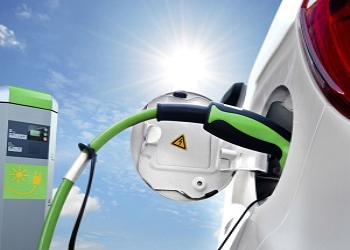Friday, November 24, 2017
By Carkhabri Team

How Electric Mobility Will Take Shape In India: An Overview (Part – II)
In recent years going through the impacts of global warming all countries across the world have shown their concern towards it and are encouraging the use of products that are helpful in improving the atmospheric conditions throughout the world. In these efforts almost all the countries have now encouraged the use of electric vehicles for making the environment free from the pollution arising from the vehicles.
Following the same practice the government of India has also decided to encourage the use of electric vehicles in India and has made a vision plan to stop the driving of vehicles running on fossils fuel completely by 2030. The vision although has received an encouraging response from the car manufacturers, but due to lack of transparency in the policies determined by the government of India despite of their interest these manufacturers are hesitating in developing electric vehicles for Indian car market. Going through all these efforts we are trying to analyze the options that will help in determining the factors which could be exploited for increasing use of electric vehicles within the country. In continuation of our blog How Electric Mobility Will Take Shape in India: An Overview (Part I) today we will be focusing on the option which could play an incredible role in increasing the use of these vehicles in India.

Electric Vehicles as Storage system: The future of vehicles empowered with solar and electrical energy is inter-related. The batteries used on electric vehicles have an efficiency of storing the solar energy which could play an important role in pushing India towards pollution free atmosphere. The solar energy developed during the daytime can be stored in the batteries. This strategy has helped in minimizing the cost of lithium batteries dynamically from $600 per kilowatt hour during 2012 to $250 per kilowatt in 2017. It is believed that prices of lithium batteries will come more down to $100 per kilowatt by 2024.
End of fossil fuel:Moving ahead with Niti Aayog recommending offering fiscal incentives to electric vehicles manufacturers it is believed that in coming years almost all manufacturers will be adding electric vehicles as third option in the vehicles being launched by them in coming months.
In the draft christened as National Energy Policy, it is said that there is huge potential of growth for electric vehicles in Indian car market which could minimize the requirement of fossil fuel to huge extent. The draft also says that “The advent of EVs will have helped curb a rise in share of oil and environment friendly gas would substitute oil in many uses,”
India’s Move Towards Electric Mobility: Recently Energy Efficiency Services Limited has been authorized to encourage the use of electric vehicles in India. And therefore the firm that was recognized as the firm for manufacturing LED bulbs at the low cost had recently invited bids of supplying 10,000 units of electric cars for encouraging the use of electric vehicles in the government departments.
It would be interested to know that domestic car maker Tata Motors succeeded in winning the large portion of the bid, another home grown car maker Mahindra and Mahindra succeed in getting the order of supply 30% of the car to the EESL.
Absence of effective policy: Although the government of India has determined its vision of increasing use of electric vehicles in the country by 2030, but for that there is requirement of effective charging stations to combat the problem of charging vehicles at different places.

Other issue is to select between alternating current (AC) and direct current (DC) chargers. Using an AC will require six hours to charge the car, whereas DC requires only 40 minutes in charging the vehicle.
Along with this according to regulations for electricity sales in the country, under the Electricity Act 2003, distribution license is required to be issued by State Electricity Regulatory Commissions.
In the words of Mr. Saurabh Kumar, Managing Director, “There are certain regulatory pieces which needs to be fine tuned and the biggest one according to me is the fact that today as per the CERC (Central Electricity Regulatory Commission) regulations it is only a distribution licensee that can sell power,”
Simply it can be said that to changing the infrastructure immediately is not an easy task and it can be changed only with appropriate strategy and supportive infrastructure. With India emerging as one of the fastest car growing market across the world in recent years, use of electric vehicles will also witness the same growth the only things for government to do are determining an effective policy and also encouraging the manufacturers of electric vehicles with alluring incentives.



Comments (0)